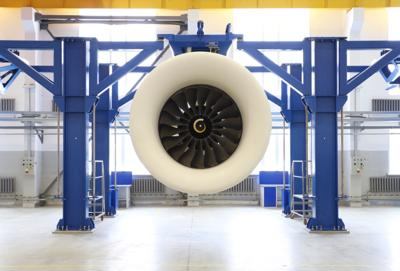Mon, Nov 01, 2021
Simulated Flight Through Volcanic Ash is Undeterred
Russian aviation manufacturer Rostec announced an unorthodox test outcome this week for their newest PD-14 aircraft engine. The first modern turbofan engine created by the company, the project is key to upcoming aircraft in Russian service. Using volcanic ash from the Kamchatka volcano Shiveluch, the company said the engine continued to function under simulated cloud environments, usually a death sentence for turbine engines.

Though a worst-case hypothetical scenario, it’s not entirely impossible for an aircraft to be subjected to ash cloud ejections from a volcanic eruption or similarly dense particulates in the air. Testing the functionality of an aircraft engine in such conditions is less an earnest developmental goal, and more an unorthodox way of testing how fault-tolerant and reliable a turbine engine is off of the ground stand, in the real, unforgiving world.
The tests were completed at the Central Institute of Aviation Motors as part of the PD-14’s type certificate for EASA evaluation. The gas generator section was the primary focus of the testing procedures. Completion of the evaluation has allowed specialists from UEC-Aviadvigatel to develop recommendations for maintenance and flight operation for aircraft equipped with PD-14 engines in case of passing through clouds of ash or choking dust storms.
“For the first time in the history of Russian engine building, Rostec State Corporation had a gas generator of an aircraft engine tested under the conditions of volcanic ash. The newest PD-14 engine for medium-haul airliners successfully passed the test with ash from Kamchatka volcano Shiveluch - the thrust of the power plant, which had been in this aggressive environment for an hour, practically did not decrease. After disassembly, the specialists of the Perm Design Bureau did not find any undesirable consequences for the product, and that confirms the safety of operation when flying through a dust storm or an ash cloud,” said Anatoly Serdyukov, Industrial Director of Rostec State Corporation Aviation Cluster.
More News
Takeoff Roll The process whereby an aircraft is aligned with the runway centerline and the aircraft is moving with the intent to take off. For helicopters, this pertains to the act>[...]
“We’re proud of the hard work that went into receiving this validation, and it will be a welcome relief to our customers in the European Union. We couldn’t be mor>[...]
"Aircraft Spruce is pleased to announce the acquisition of the parts distribution operations of Wag-Aero. Wag-Aero was founded in the 1960’s by Dick and Bobbie Wagner in the >[...]
IDENT Feature The special feature in the Air Traffic Control Radar Beacon System (ATCRBS) equipment. It is used to immediately distinguish one displayed beacon target from other be>[...]
Aero Linx: Pararescue Air Force Pararescuemen, also known as PJs, are the only DoD elite combat forces specifically organized, trained, equipped, and postured to conduct full spect>[...]
 ANN's Daily Aero-Term (05.10.24): Takeoff Roll
ANN's Daily Aero-Term (05.10.24): Takeoff Roll Aero-News: Quote of the Day (05.10.24)
Aero-News: Quote of the Day (05.10.24) Aero-News: Quote of the Day (05.11.24)
Aero-News: Quote of the Day (05.11.24) ANN's Daily Aero-Term (05.11.24): IDENT Feature
ANN's Daily Aero-Term (05.11.24): IDENT Feature ANN's Daily Aero-Linx (05.11.24)
ANN's Daily Aero-Linx (05.11.24)



